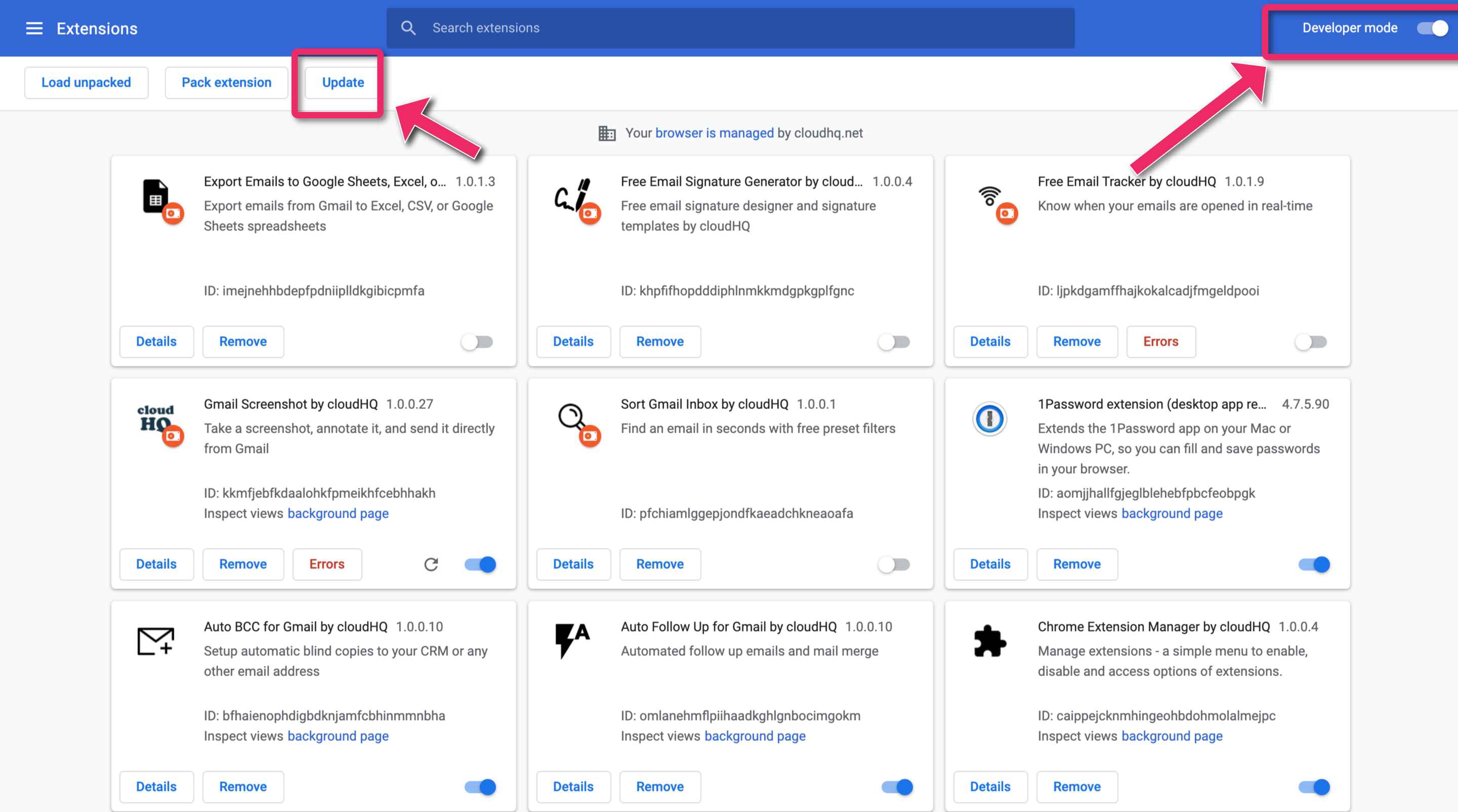Upgrade Chrome On Mac
There are instructions for other platforms linked from the get the code page.
Instructions for Google Employees
Are you a Google employee? See go/building-chrome instead.
If your Mac isn't compatible with the latest macOS, you might still be able to upgrade to an earlier macOS, such as macOS Catalina, Mojave, High Sierra, Sierra, or El Capitan. To get the latest features and maintain the security, stability, compatibility, and performance of your Mac, it's important to keep your software up to date. Learn How to Update Chrome on Mac 2020.
System requirements
A 64-bit Intel Mac running 10.15.4+. (Building on Arm Macs is not yet supported.)
Xcode 12.2+. This version of Xcode comes with ...
The macOS 11.0 SDK. Run
to check whether you have it. Building with a newer SDK usually works too (please fix it if it doesn't), but the releases currently use Xcode 12.2 and the macOS 11.0 SDK.
Install depot_tools
Clone the depot_tools repository:
Add depot_tools to the end of your PATH (you will probably want to put this in your ~/.bash_profile or ~/.zshrc). Assuming you cloned depot_tools to /path/to/depot_tools (note: you must use the absolute path or Python will not be able to find infra tools):
Get the code
Ensure that unicode filenames aren't mangled by HFS:
In System Preferences, check that “Energy Saver” -> “Power Adapter” -> “Prevent computer from sleeping automatically when the display is off” is checked so that your laptop doesn't go to sleep and interrupt the long network connection needed here.
Create a chromium directory for the checkout and change to it (you can call this whatever you like and put it wherever you like, as long as the full path has no spaces):
Run the fetch tool from depot_tools to check out the code and its dependencies.
If you don't need the full repo history, you can save time by using fetch --no-history chromium. You can call git fetch --unshallow to retrieve the full history later.
Expect the command to take 30 minutes on even a fast connection, and many hours on slower ones.
When fetch completes, it will have created a hidden .gclient file and a directory called src in the working directory. The remaining instructions assume you have switched to the src directory:
Optional: You can also install API keys if you want your build to talk to some Google services, but this is not necessary for most development and testing purposes.
Setting up the build
Chromium uses Ninja as its main build tool along with a tool called GN to generate .ninja files. You can create any number of build directories with different configurations. To create a build directory:
- You only have to run this once for each new build directory, Ninja will update the build files as needed.
- You can replace
Defaultwith another name, but it should be a subdirectory ofout. - For other build arguments, including release settings, see GN build configuration. The default will be a debug component build matching the current host operating system and CPU.
- For more info on GN, run
gn helpon the command line or read the quick start guide. - Building Chromium for arm Macs requires additional setup.
Faster builds
Full rebuilds are about the same speed in Debug and Release, but linking is a lot faster in Release builds.
Put
in your args.gn to do a release build.

Put
in your args.gn to build many small dylibs instead of a single large executable. This makes incremental builds much faster, at the cost of producing a binary that opens less quickly. Component builds work in both debug and release.
Put
in your args.gn to disable debug symbols altogether. This makes both full rebuilds and linking faster (at the cost of not getting symbolized backtraces in gdb).

CCache

:max_bytes(150000):strip_icc()/002-how-to-update-chrome-on-a-mac-5f8c3e2fc5984921bf3fe540fbff25b4.jpg)
You might also want to install ccache to speed up the build.
Build Chromium

Build Chromium (the “chrome” target) with Ninja using the command:
(autoninja is a wrapper that automatically provides optimal values for the arguments passed to ninja.)
You can get a list of all of the other build targets from GN by running gn ls out/Default from the command line. To compile one, pass the GN label to Ninja with no preceding “//” (so, for //chrome/test:unit_tests use autoninja -C out/Default chrome/test:unit_tests).
Run Chromium
Once it is built, you can simply run the browser:
Avoiding the “incoming network connections” dialog
Every time you start a new developer build of Chrome you get a system dialog asking “Do you want the application Chromium.app to accept incoming network connections?” - to avoid this, run with this command-line flag:
--disable-features=“MediaRouter”
Running test targets
You can run the tests in the same way. You can also limit which tests are run using the --gtest_filter arg, e.g.:
You can find out more about GoogleTest at its GitHub page.
Debugging
Good debugging tips can be found here.
Update your checkout
To update an existing checkout, you can run
The first command updates the primary Chromium source repository and rebases any of your local branches on top of tip-of-tree (aka the Git branch origin/master). If you don't want to use this script, you can also just use git pull or other common Git commands to update the repo.
The second command syncs dependencies to the appropriate versions and re-runs hooks as needed.
Tips, tricks, and troubleshooting
Using Xcode-Ninja Hybrid
While using Xcode is unsupported, GN supports a hybrid approach of using Ninja for building, but Xcode for editing and driving compilation. Xcode is still slow, but it runs fairly well even with indexing enabled. Most people build in the Terminal and write code with a text editor, though.
With hybrid builds, compilation is still handled by Ninja, and can be run from the command line (e.g. autoninja -C out/gn chrome) or by choosing the chrome target in the hybrid project and choosing Build.
To use Xcode-Ninja Hybrid pass --ide=xcode to gn gen:
Open it:
You may run into a problem where http://YES is opened as a new tab every time you launch Chrome. To fix this, open the scheme editor for the Run scheme, choose the Options tab, and uncheck “Allow debugging when using document Versions Browser”. When this option is checked, Xcode adds --NSDocumentRevisionsDebugMode YES to the launch arguments, and the YES gets interpreted as a URL to open.
If you have problems building, join us in #chromium on irc.freenode.net and ask there. Be sure that the waterfall is green and the tree is open before checking out. This will increase your chances of success.
Improving performance of git status
Increase the vnode cache size
git status is used frequently to determine the status of your checkout. Due to the large number of files in Chromium‘s checkout, git status performance can be quite variable. Increasing the system’s vnode cache appears to help. By default, this command:
Outputs kern.maxvnodes: 263168 (263168 is 257 * 1024). To increase this setting:
Higher values may be appropriate if you routinely move between different Chromium checkouts. This setting will reset on reboot, the startup setting can be set in /etc/sysctl.conf:
Or edit the file directly.
Configure git to use an untracked cache
If git --version reports 2.8 or higher, try running
If the output ends with OK, then the following may also improve performance of git status:
If git --version reports 2.6 or higher, but below 2.8, you can instead run
Xcode license agreement
If you're getting the error
Agreeing to the Xcode/iOS license requires admin privileges, please re-run as root via sudo.
How To Upgrade Chrome On Mac
the Xcode license hasn't been accepted yet which (contrary to the message) any user can do by running:
Only accepting for all users of the machine requires root:
Search giant Google is rolling out what is likely the last incremental release of Chrome 21 for Leopard users, squashing any remaining bugs before moving onto releases that target newer versions of OS X. The iOS version of the browser has been updated as well.
Last week, Google issued a memo to Mac users of its Chrome web browser informing the Leopard install-base that version 21 was the last they’d see on the five-year old Mac OS.
“If you already have Chrome installed, you can still use Chrome, but it will no longer be auto-updated,” the company behind the world’s biggest search engine said.
Chrome Mac Download
“In addition, you’ll be unable to install Chrome on any Mac still running 10.5 (which is an OS X version also no longer being updated by Apple),” it added.
While Google never said anything about incrementing Chrome on Leopard one last time, a recent update on the Stable channel indicates that this is the case.
Google Chrome Mac Os
Karen Grunberg blogging for Google reports that, “The Stable channel has been updated to 21.0.1180.90 for Mac 10.5 users only.” Users are directed to the changelog to see what’s new (mostly bug fixes), and those who find new issues are apparently still encouraged to use the bug reporter.
“You can see the list of changes here. If you find new issues, please let us know by filing a bug at http://code.google.com/p/chromium/issues/entry,” reads the announcement.
On the iOS front, Chrome 21.0.1180.82 is now available to iPhone and iPad users preferring the Google web browsing experience over the iOS built-in Safari.
The changelog here is terse, mentioning only compatibility updates for iPhone 5 and iOS 6, as well as a bunch of “stability and security improvements.” You can download both updates via the links below.
